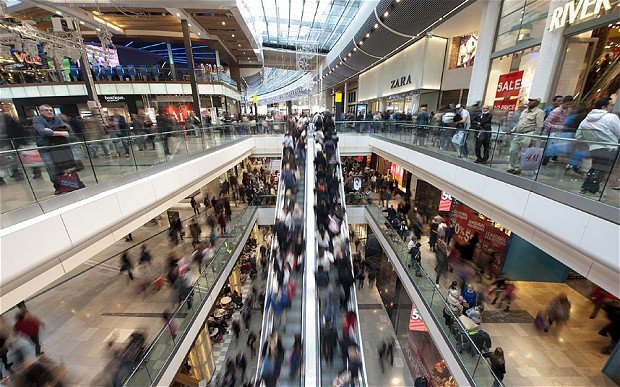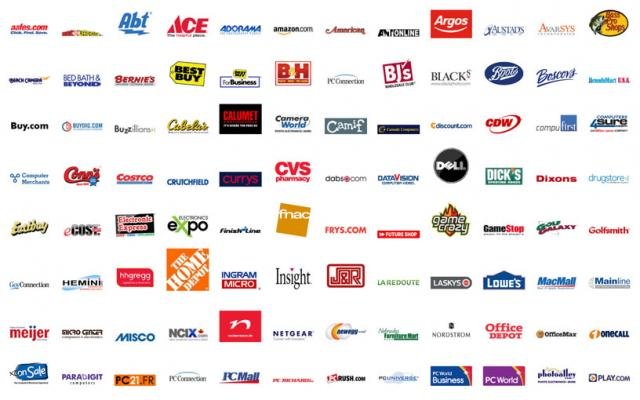Definition of Retail Marketing
Retail is the sale of goods and services from businesses to an end user (called a customer). Retail marketing is the process by which retailers promote awareness and interest of their goods and services in an effort to generate sales from their consumers. There are many different approaches and strategies retailers can use to market their goods and services (see below).
Retail Marketing Mix: The Four Ps of Retail Marketing
Retailers use various advertising and communication tools to grow awareness and consideration with future customers. Finding the right marketing mix can lead to profitable growth and a higher return on investment. By considering the right advertising strategy retailers can persuade consumers to choose to do business with their retail brand. The fundamental approach used by modern retailers in marketing their products is the Four Ps of Retail Marketing.
Product: There are two primary types of merchandise. Hard or durable goods like appliances, electronics, and sporting equipment. And soft goods like clothing, household items, cosmetics, and paper products. Some retailers carry a range of hard and soft items like a supermarket or a major retail chain while many smaller retailers only carry one category of goods, like a boutique clothing store.
Price: Pricing is a key element of any retail strategy. The retail price needs to cover the cost of goods as well as additional overhead costs. There are four primary pricing strategies used by retailers:
-
Everyday low pricing: The retailer operates on thin margins and attracts customers interested in the lowest possible price. This strategy is used by big box retailers like Wal-Mart and Target.
-
High/low pricing: The retailer starts with a high price and later reduces the price when the item’s popularity fades. This strategy is mainly used by small to mid-sized retailers.
-
Competitive pricing: The retailer bases the price on what their competition is charging. This strategy is often used after the retailer has exhausted the higher pricing strategy (high/low pricing).
-
Psychological pricing: The retailer sets the price of items with odd numbers that consumers perceive as being lower than they are. For example, a list price of $1.95 is associated with spending $1 rather than $2 in the customer’s mind. This strategy is also called pricing ending or charm pricing.
Place: The place is where the retailer conducts business with its customers. The place can be a physical retail location or a non-physical space like a catalog company or an e-store. While most retailers are small, independently owned operations (over 90%), over 50% of retail sales are generated by major retailers often called “big box retailers” (see the list of the top 20 big box retailers below).
Promotion: Promotion is the final marketing mix element. Promotions include personal selling, advertising, sales promotion, direct marketing, and publicity. A promotional mix specifies how much attention to pay to each tactic, and how much money to budget for each. A promotion can have a wide range of objectives, including increasing sales, new product acceptance, creation of brand equity, positioning, competitive retaliations, or the creation of a corporate image.

The Four Ps Revisited: Customer-Oriented Retail Marketing
In recent years, to address the need to take a more customer-oriented approach to marketing, the 4 Ps of Retail Marketing have been revised and replaced by the 4 Cs: Consumer, Cost, Communication, and Convenience.
Consumer (versus Product): Instead of focusing on the product the retailer wants to sell, a smart retailer studies the wants and needs of its consumers before going to market. The more clearly a retailer understands the wants and needs of its customer base, the greater chance it will have of attracting customers and increasing sales.
Cost (versus Price): In retail, a cost is the value of money that has been used up to produce something. Factors that influence cost include the customer’s cost to change to a new product and the customer’s cost for not selecting a competitor’s product.
Convenience (versus Place): The Internet has made Place less of a factor in consumer purchasing decisions. Convenience addresses the ease of completing a transaction including the ease of finding information about a product, finding the right product, and purchasing a product.
Communication (versus Promotion): Communications includes a range of efforts including advertising, public relations, grassroots efforts, social media, and any other form of communication between the company and the consumer.
Struggling with Marketing?
Email us to find out how you can start building a brand
The Top 20 Retailers in 2022
In some parts of the world, the retail industry is still dominated by small family-run stores, but this market is increasingly being taken over by large retail chains. The retail landscape continues to evolve, with e-commerce giants and discount chains playing an increasingly prominent role. Here’s a look at the top 20 retailers in 2022 based on total company revenues according to the National Retail Federation [NRF]:
| Rank | Company | 2022 Worldwide Retail Sales (billions) |
|---|---|---|
| 1 | Walmart | $600.94 |
| 2 | Amazon.com | $343.33 |
| 3 | Costco Wholesale | $217.53 |
| 4 | The Kroger Co. | $147.62 |
| 5 | The Home Depot | $155.42 |
| 6 | Target | $107.59 |
| 7 | CVS Health Corporation | $106.59 |
| 8 | Walgreens Boots Alliance | $116.10 |
| 9 | Lowe’s Companies | $93.61 |
| 10 | Albertsons Companies | $76.15 |
| 11 | Apple Stores / iTunes | $80.30 |
| 12 | Royal Ahold Delhaize USA | $92.14 |
| 13 | Publix Super Markets | $54.53 |
| 14 | Best Buy | $46.19 |
| 15 | Aldi | $124.25 |
| 16 | TJX Companies | $48.94 |
| 17 | Dollar General | $37.88 |
| 18 | H.E. Butt Grocery | $36.80 |
| 19 | 7-Eleven | $86.11 |
| 20 | Dollar Tree | $28.36 |
Contact us to discuss how you can better prepare for what’s ahead. We can help you identify ways for your organization to tap into the power of cult branding, create value, and ultimately thrust your performance.

